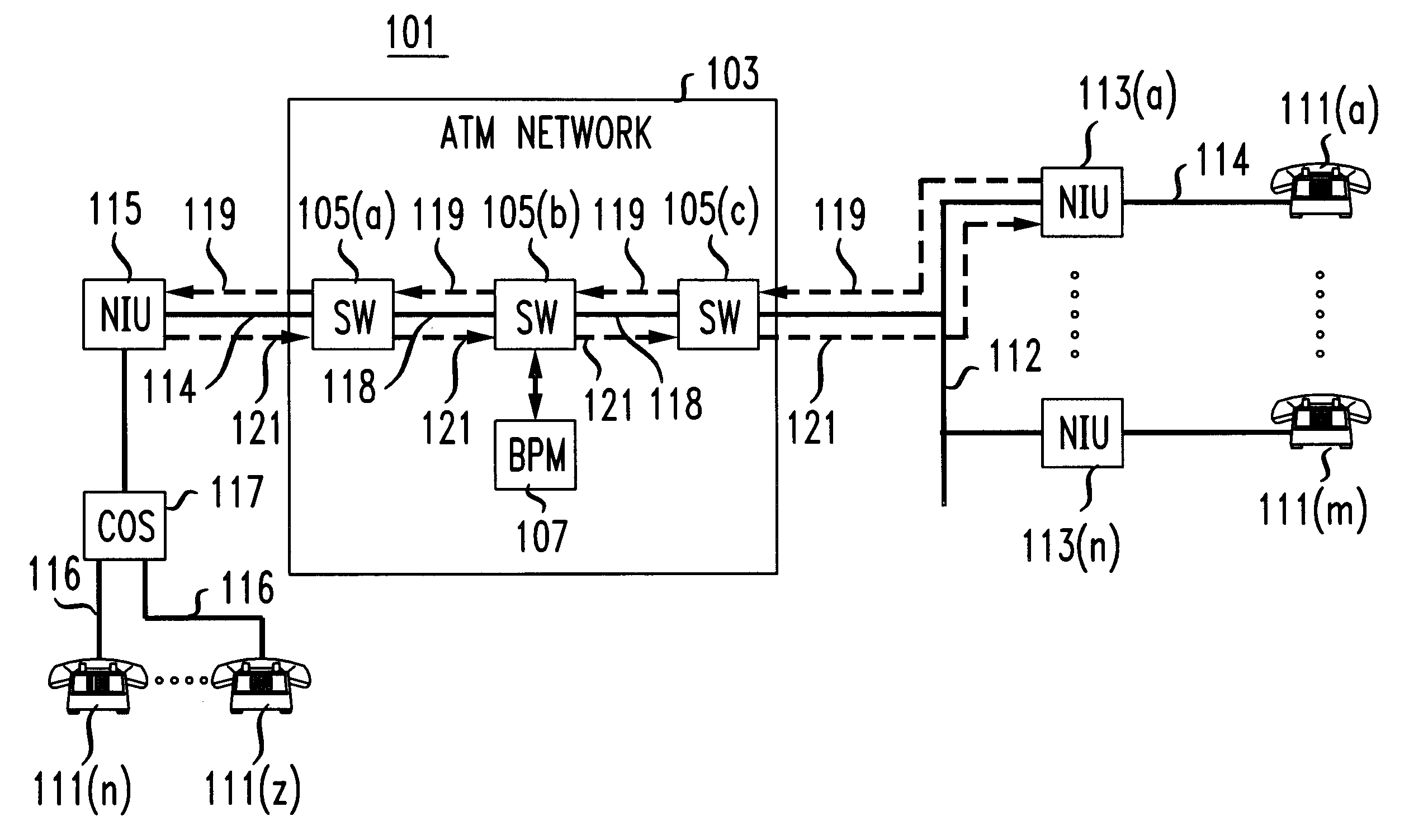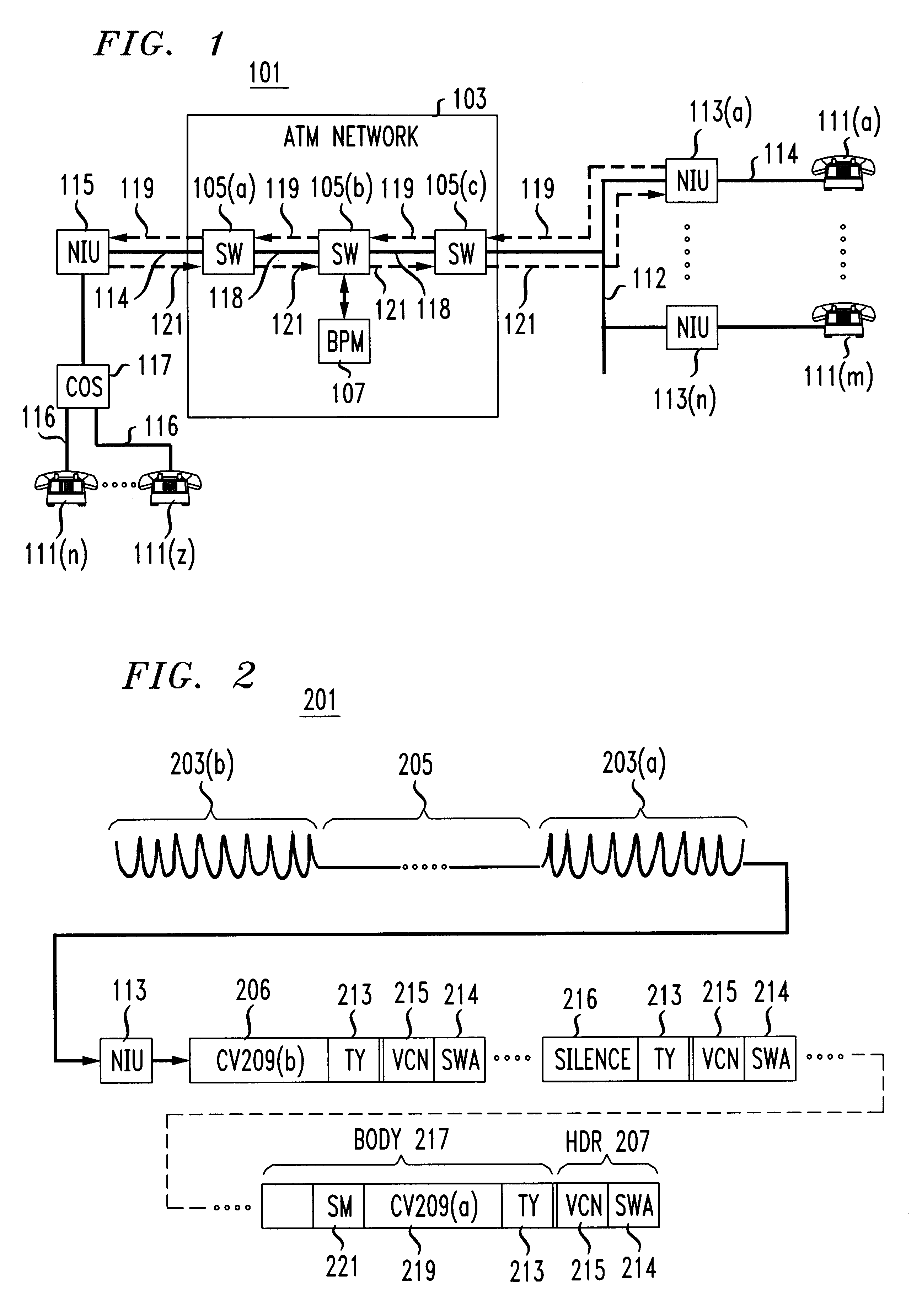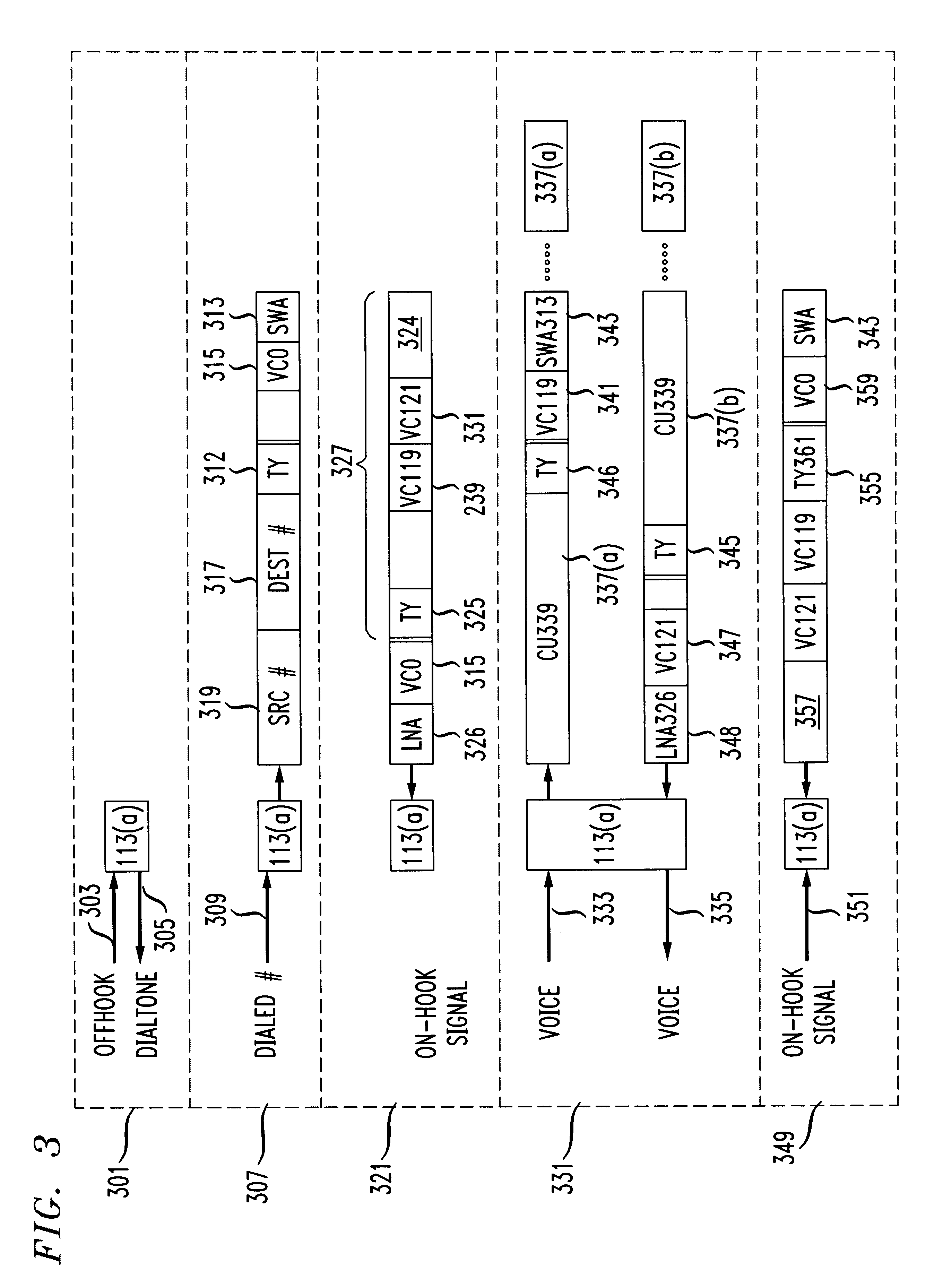Packet telephone system
a telephone system and telephone system technology, applied in the field of packet telephone systems, can solve the problems of data communication generally burst, waste of telephone system resources, and the need to remain relatively constant throughout the communication, so as to reduce the amount of network resources required, simplify the design of devices in the network, and reduce the cost of building and running the system
- Summary
- Abstract
- Description
- Claims
- Application Information
AI Technical Summary
Benefits of technology
Problems solved by technology
Method used
Image
Examples
Embodiment Construction
The following discussion of the details of a preferred embodiment will first discuss voice encoding in the preferred embodiment and will then disclose details of the network interface unit.
Voice Encoding: FIG. 2
In a preferred embodiment, the voice signals in voice packet 205 are encoded using an encoding scheme such as Transform Predictive Coding, explained in J.-H Chen, "Low complexity wideband speech coding", in: Proc. IEEE Workshop on Speech Coding for Telecommunications, pp. 27-28, Annapolis, Md., September 1995. Encoding and decoding are both done on microprocessors in the network interface units. At present, encoders and decoders which will run on microprocessors such as the Pentium microprocessors manufactured by Intel (Pentium is a trademark of Intel) are able to reduce the bandwidth required for toll-quality voice from 64 Kbs to 16 Kbs, and future reductions to 8 Kbs appear to be possible.
Further bandwidth reductions are obtained by using the microprocessor in the network i...
PUM
 Login to View More
Login to View More Abstract
Description
Claims
Application Information
 Login to View More
Login to View More - R&D
- Intellectual Property
- Life Sciences
- Materials
- Tech Scout
- Unparalleled Data Quality
- Higher Quality Content
- 60% Fewer Hallucinations
Browse by: Latest US Patents, China's latest patents, Technical Efficacy Thesaurus, Application Domain, Technology Topic, Popular Technical Reports.
© 2025 PatSnap. All rights reserved.Legal|Privacy policy|Modern Slavery Act Transparency Statement|Sitemap|About US| Contact US: help@patsnap.com



